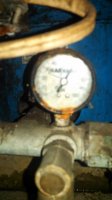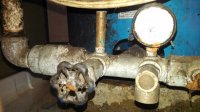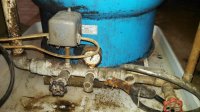hellspcangel911
New Member
Hi All,
Long time reader, first time poster. Love the forum, lots of great advice and troubleshooting help here, all in a fostering environment. Hoping to contribute to that.
Problem 1: The house we recently bought (1993 built) has a well pump, I would assume about 500 feet deep. At the tank there is a 1" PVC pipe threaded into a brass check valve before the relay. I cant find a definitive statement as to whether or not there should be a check valve here. It seems like most folks say the onl check valve should be on the pump itself. This was brought o my attention when sitting in the house alone with all the appliance off and I heard water being pumped up. All the outside faucets are off, no leaks anywhere but it keeps pumping. I figured I would start by replacing the check valve and started searching whether it should be installed horizontally or vertically and then read posts that it should be removed. Thoughts?
Problem 2: The house has four zones, one vertically installed tac0 007 pump running off a oil fired peerles furnace. The first floor is 1160sqft and has two zones. Zone A has about 19 feet and Zone B has about 42 feet of baseboard radiator. Its a very open floor plan, standard colonial style. My issue is that Zone B cannot bring the house up to temp. Last week it week it was a low of 8 and high of 34, thermorstat turned the heat on from 58 degrees at 4:30 am to 68. at 11am it was 63, by 7pm it hit 68. In the afternoon I manually closed the other zones to rule that out. I had the covers off the baseboards and vacuumed them, hot zone valve is working, the feed and return for that zone were too hot to keep my hand on for more than 2-3 seconds but I'm just not getting a lot of heat. Would a larger circ pump help? what should I check?
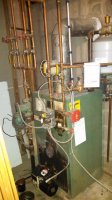
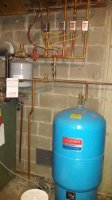
Thanks in advance!
George
Long time reader, first time poster. Love the forum, lots of great advice and troubleshooting help here, all in a fostering environment. Hoping to contribute to that.
Problem 1: The house we recently bought (1993 built) has a well pump, I would assume about 500 feet deep. At the tank there is a 1" PVC pipe threaded into a brass check valve before the relay. I cant find a definitive statement as to whether or not there should be a check valve here. It seems like most folks say the onl check valve should be on the pump itself. This was brought o my attention when sitting in the house alone with all the appliance off and I heard water being pumped up. All the outside faucets are off, no leaks anywhere but it keeps pumping. I figured I would start by replacing the check valve and started searching whether it should be installed horizontally or vertically and then read posts that it should be removed. Thoughts?
Problem 2: The house has four zones, one vertically installed tac0 007 pump running off a oil fired peerles furnace. The first floor is 1160sqft and has two zones. Zone A has about 19 feet and Zone B has about 42 feet of baseboard radiator. Its a very open floor plan, standard colonial style. My issue is that Zone B cannot bring the house up to temp. Last week it week it was a low of 8 and high of 34, thermorstat turned the heat on from 58 degrees at 4:30 am to 68. at 11am it was 63, by 7pm it hit 68. In the afternoon I manually closed the other zones to rule that out. I had the covers off the baseboards and vacuumed them, hot zone valve is working, the feed and return for that zone were too hot to keep my hand on for more than 2-3 seconds but I'm just not getting a lot of heat. Would a larger circ pump help? what should I check?


Thanks in advance!
George

